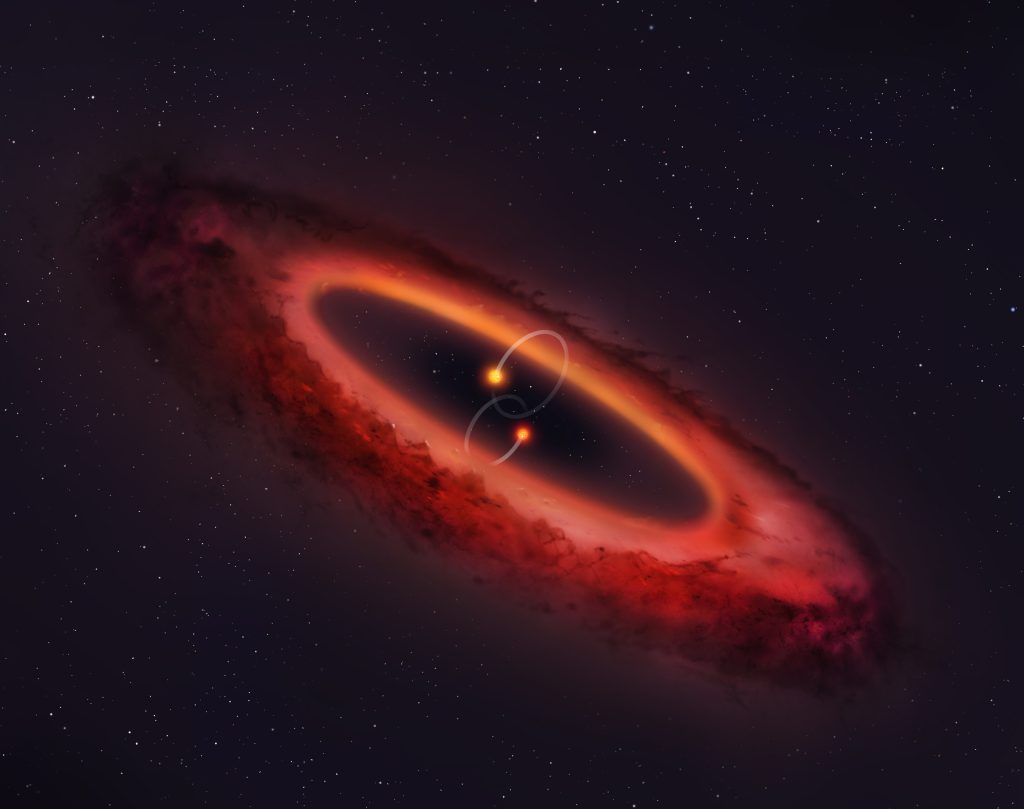Astronomers Find Planetary Disk in Pole Position of Binary Star System

University of Warwick/Mark Garlick
An international team of researchers have confirmed the discovery of a planetary disc that orbits its binary star system at a 90-degree angle to the two stars’ orbit around a common center of gravity. This binary star system, officially named HD 98800, resides about 150 light-years from Earth. The research team used the Atacama Large Millimeter/sub-millimeter Array (ALMA) to observe the planetary disc orbiting in a polar position.
Some Earth satellites have polar orbits that take them endlessly between the North and South poles of Earth. Theorists have said that it may be possible for a binary star system’s planetary disc to have this type of orbit. This is the first time that this configuration has been observed.
Dr Grant M. Kennedy of the University of Warwick said:
“Discs rich in gas and dust are seen around nearly all young stars, and we know that at least a third of the ones orbiting single stars form planets. Some of these planets end up being misaligned with the spin of the star, so we’ve been wondering whether a similar thing might be possible for circumbinary planets. A quirk of the dynamics means that a so-called polar misalignment should be possible, but until now we had no evidence of misaligned discs in which these planets might form.”
While science fiction includes planets that have two or more suns, such as Star Wars’ Tatooine, most astronomers used to believe that most stars with planetary systems would be similar to our own, with planets orbiting a single star in the same plane and in the same direction. It was believed that a planetary system orbiting more than one star would be unstable.
This new discovery suggests that “misaligned” planetary discs that can orbit more than one star not only exist, but may also be more common than previously believed. In fact, there is evidence that the binary system also has two more stars orbiting the binary stars’ disc.
“If planets were born here, there would be four suns in the sky,” astronomer Daniel Price said of the discovery.
The study has been publishes in Nature Astronomy.





